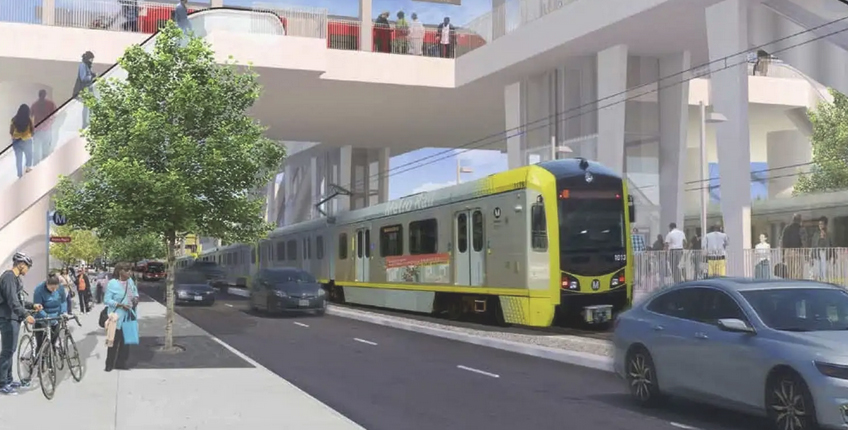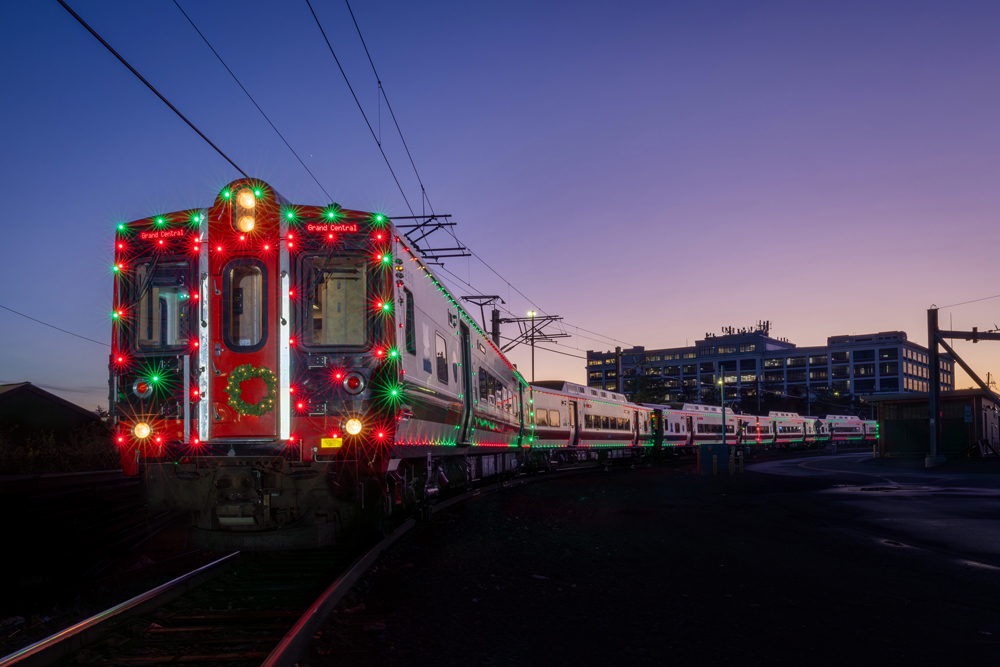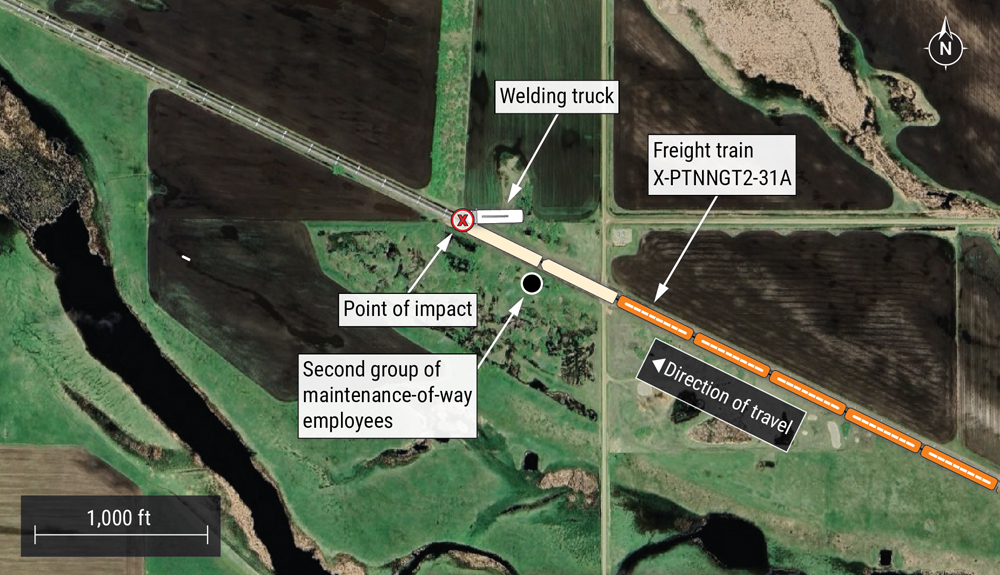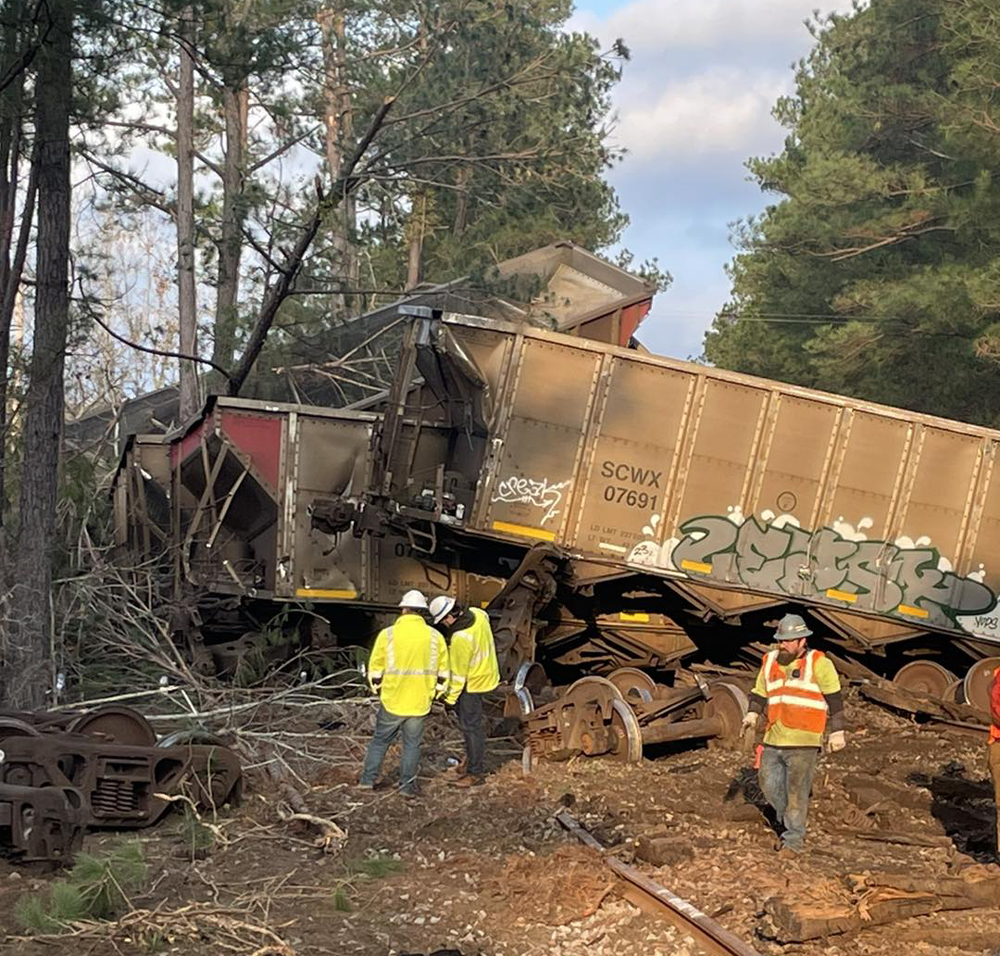
WASHINGTON — Eighteen major projects in 11 states have been recommended for some $4.45 billion in construction funding as part of President Joe Biden’s fiscal 2024 Budget Request to Congress, the Federal Transit Administration has announced. This includes nine projects that would receive federal funding for the first time.
Two rail projects are among those projected first-time recipients: The Chicago Transit Authority would receive $350 million for its Red Line Extension project, to add 5.6 miles of heavy rail on the city’s Far South Side, and the Utah Department of Transportation would receive $316.8 million for the FrontRunner Strategic Double Track project, as well as 10 new trainsets.
Other rail projects recommended for funding include:
— In California, two segments of LA Metro’s Westside Subway project; Metro’s San Fernando Valley Transit Corridor light rail project; and the BART Silicon Valley Phase II extension between San Jose and Santa Clara.
— In Minnesota, the 14.5 mile Minneapolis Southwest Light Rail Transit project.
— In Washington state, Sound Transit’s Lynwood Link light rail extension.
— In New York and New Jersey, $700 million for the proposed Hudson Tunnel project, and $496.8 million for the second phase of the Metropolitan Transportation Authority’s Second Avenue Subway.
The full list of projects, and more details on each, is available here.
The Washington Post reports the budget proposes about $6.9 trillion in spending next year, while seeking to reduce the budget deficit with a $4.5 trillion increase in new revenue, mostly through tax hikes on high earners and large corporations, and by controlling federal spending on prescription drugs. Republicans in the House of Representatives have already said they will not pass the President’s budget.














The Hudson River Tunnel project should have been started and completed years ago and each year that goes by without as so much as a shovel of dirt dug, the cost keeps going up and up. As for the second phase of the Second Avenue Stubway in New york, that is hardly a major project when it only comprises a short section to 125th Street and only three stations. As of now there is debate on where to end the line either at 125th Street and 2nd Avenue or curve the line around under 125th Street and end it at Park Avenue with connections to Metro North and the Lexington Avenue subway. What happened to the orginal proposal to extend the 2nd Avenue subway into the Bronx and as for the line south of 72nd Streeet to Water Street in downtown Manhattan that will never be built in our lifetime. It is amazing how so many great transit projects in New York were built and completed in the last century with private capital and ventures with little to no federal or government funding. Today Federak funding is needed for almost all rail and transit projects and the length and scope of these projects are very small when compared to what was accomplished over a century ago.
Joseph C. Markfelder
I cannot speak to the projects noted in the article here in NY/New Jersey, California, and Minnesota, but the Sound Transit Lynnwood LINK LRT extension project in the Seattle area is behind schedule (at least one-year) and is over budget. I haven’t looked at the link to the article, but wouldn’t be surprised if there’s funding in Biden’s excessive/ludicrous budget proposal for the Honolulu HART / LRT construction project, another light-rail boondoggle that is grotesquely over-budget and behind schedule.
I suppose an argument could somehow be made that a taxpayer in Oklahoma should pay federal taxes to support an over-budget light-rail project (boondoggle) in Hawaii, or a taxpayer in Florida or Maine paying for a Seattle-area LRT project, but the counter-argument could be made as well. If local taxpayers vote to approve taxes and funding for a major regional transit infrastructure project, THEY should pay for it, not the federal tax-payer. Of course the FTA is a dysfunctional, bureaucratic mess and isn’t helping in this funding/policy mess, they’re just making it worse …..
Where’s ‘Mayor Pete’ on all this? (Don’t want to know the answer to this question …)
So, what is the amount of federal taxes paid in your state as to amount of federal taxes spent in your state?
Alan,
Most of that tax money is the Federal Income Tax for individuals and businesses. Therefore, richer states are never going to get back dollar for dollar. Less well to-do states have been helped out more per resident since FDR & the Great Depression.
Readers with an interest in rail history might also take note of the recommendation to fund the conversion of the long-out-of-service Monterey Branch of the Southern Pacific Coast Line to a busway. Advancing the project would be great news for area residents; traffic along parallel Highway 1 is frequently miserable and widening the highway is nearly impossible, financially or environmentally.
More fuel efficient vehicles and increasing number of battery powered vehicles are leading to declining gas tax revenue. Raise the tax or impose highway use taxes on new tires, motor oil or something. Maybe an electric tax for recharging your Tesla.
But I’m also tired of paying for someone else’s local transit project. I use my bicycle frequently to run errands. Maybe I can get a Federal grant to upgrade.
While the Defense budget of $885 Billion is a lot of money, it is a distant second to ENTITLEMENTS that are over $1.5 Trillion to be funded in this budget. What is NOT accounted in this and future budgets is interest on the national debt. This years budget (2022) interest payments are between $690-$700 billion. With the FED raising interest rates. Interest payments will rise next year to close to what the Defense budget will get. within 3 years (if the FED doesn’t cut interest rates) Interest payments will become the second largest expenditure of the budget at between $1.25 and $1.4 trillion a year.
For my buck I’d rather have a Defense Department
I think the 800 Billion Defense budget pretty much cleans out the till and then some, so borrowing is unavoidable.
Well, 80% of the Infrastructure Funding is going to hwys which is also borrowed money adding to the deficit all because drivers felt they weren’t obligated to cover the rising inflationary cost of hwy construction & maintenance with an increased Fed gas tax that has not changed since Bill Clinton was President. Transit fares in my area have more than tripled since the 1990’s, perhaps we should lower those fares back to the 1990’s level & freeze them there also.
The Federal Gas Tax should be referred to a the Federal Highways User Fee. Even if it collected enough per gallon to break even with its annual outlays, it still is not a fair way for motorists to pay for their use of the interstate highway system: every vehicle gets a different miles per gallon. Electric vehicles, none! Only a per mile fee would be proportionate to usage.
Mr. Landey, in respect to your opinion, is this why Europe is so far ahead of us in 21st Century rail transit?
Fair question, Lawrence. I don’t know how European countries finance public transportation. I can only hope it’s not by endless borrowing of trillions of dollars that will never be paid back.
I have no problem at all with subsidized public transportation. Provided it’s paid out of actual tax revenue, not borrowed money that will sit as public debt forever.
Maybe it stems from the Marshall Plan, when we rebuilt western Germany, France, Belgium, The Netherlands and Italy? And with a newer capital investment base, it would have been easier and cheaper to maintain and improve.
One on the list is Interstate Transportation. The others should be 100% locally funded.
As I never miss an opporrtunity to mention, the reason for Fedeal Grants is that the federals can borrow infinite amounts of money (that at we will pay interest on forever) ….. whereas the states and localities must actually use actual revenue actually collected from actual taxes.